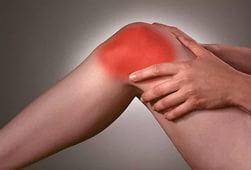
Osteoarthritis is a degenerative joint disorder in which there is gradual loss of the protective cartilage covering the end of the bones. It is more common in the weight bearing joints of the body like the knees, hips and spinal joints. Occasionally, it can also affect the joints of the fingers, toes and neck.
It usually starts in the fifties although it can occur earlier if there is an underlying joint condition like rheumatoid or septic arthritis. Women are more commonly affected than men.
The exact cause of osteoarthritis is not known but is believed to be age related. Aging puts stress and strain on the joint cartilage leading to its inflammation and erosion. As the cartilage gradually wears off, there is stretching of the surrounding ligaments and tendons leading to pain and stiffness of the affected joint.
Risk factors
Age and obesity are the main risk factors. Obesity increases the pressure on the aging joints Other underlying risk factors associated with osteoarthritis are injury of the joints, excessive stress on the joints, a genetic defect in the cartilage or as a complication of other joint diseases. Conditions like diabetes and gout can also lead to osteoarthritis.
Symptoms
The main symptom of osteoarthritis is gradually increasing joint pain and stiffness. Walking or stretching relieves both pain and stiffness to some extent in early stages of the disease. But in later stages, walking may cause increased pain. There may be swelling of the joints due to effusion and collection of fluid. The bones may rub against each other producing a crackling noise known as 'crepitus' and cause agonising pain.
When osteoarthritis affects the finger joints, hard bony enlargements known as Heberden's nodes may be formed. These are not painful but can limit the movement of the joints.
Some people may have no symptom at all and osteoarthritis may be discovered only when the patient is examined for some other condition.
Diagnosis
Diagnosis of osteoarthritis can generally be made by the clinical history and examination. X-rays can confirm the diagnosis. X-rays show loss of joint space, uneven cartilage, bone cysts and new bone growths called osteophytes.
Arthroscopy is a minor procedure in which a small camera is introduced into the knee joint to examine it under direct vision. It can be very useful to assess the severity of osteoarthritis.
Management and Treatment
The mainstay of management of osteoarthritis is lifestyle modifications. Losing weight causes less strain on the joints, decreasing pain and increasing flexibility. Exercises and physical therapy help in the loss of weight. Painkillers, rest during exacerbations or flare-ups and walking aids also help decrease the symptoms.
In later stages of osteoarthritis, these measures may not help and joint replacement surgery with physiotherapy may be needed.
Osteoarthritis gradually worsens over time - there is no cure. But maintaining a healthy lifestyle may decrease the rate of progression of the condition and help improve pain and movement of the joints.
Leave a Comment